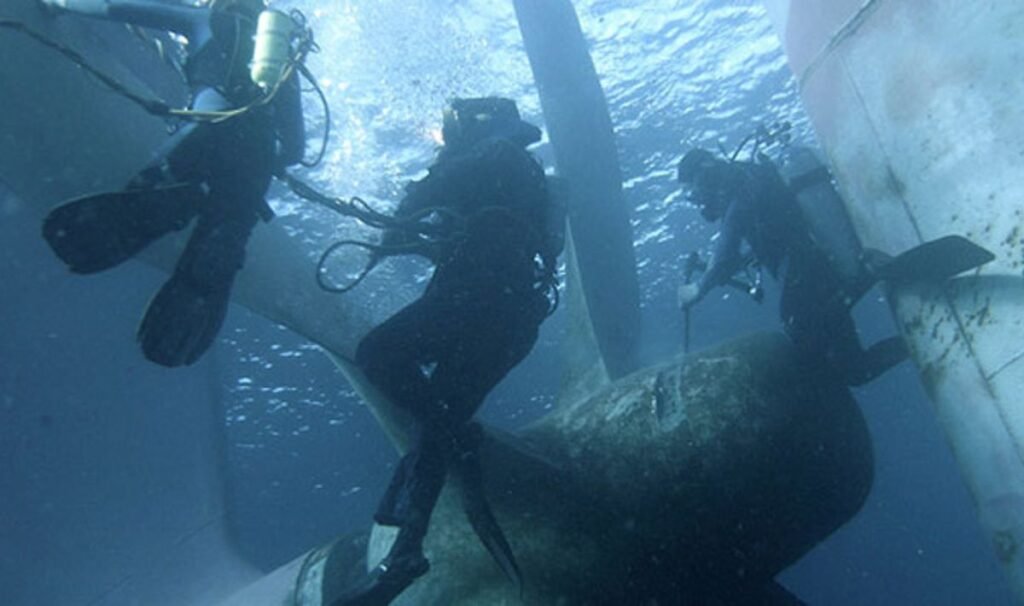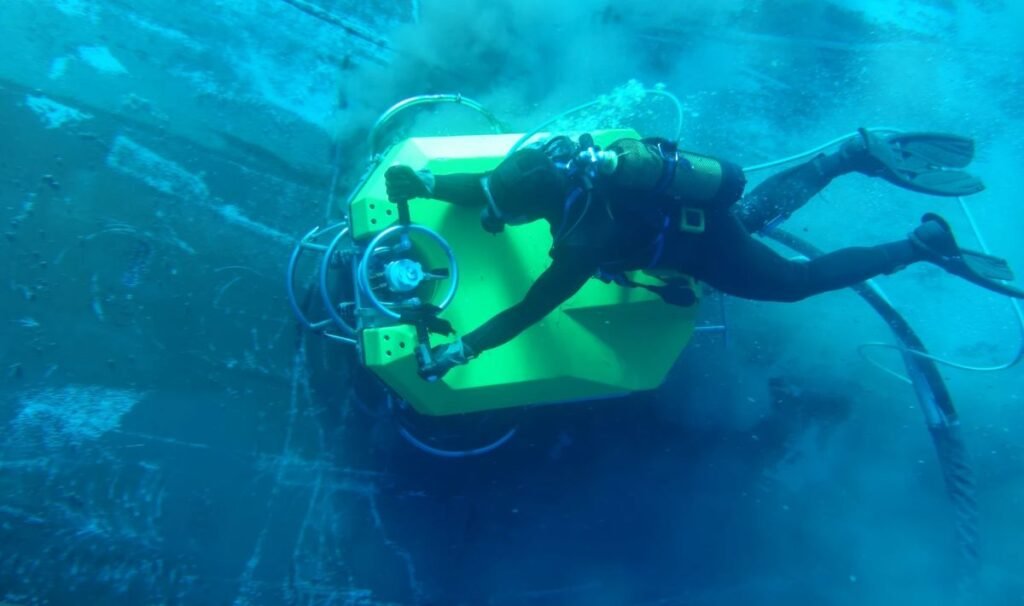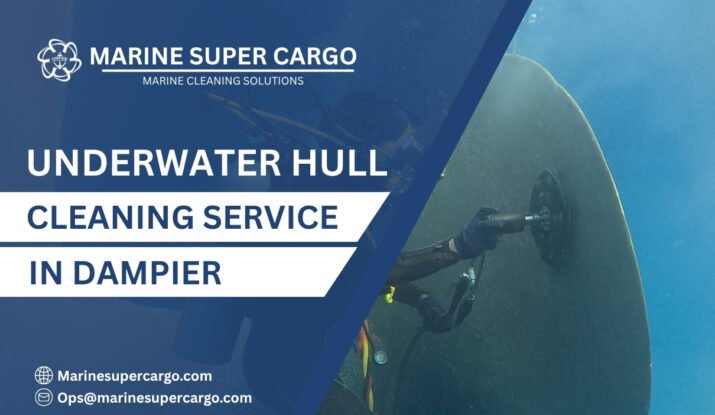The turquoise waters off Dampier may look pristine from above, but beneath the surface is a different world—one that’s quick to turn your hull into a landing zone for barnacles, slime, and algae. If you’re operating anything from a tug to a bulk carrier or a workboat, you’ll soon see how biofouling isn’t just an aesthetic issue; it impacts speed, fuel efficiency, and even the regulatory standing of your vessel. Whether you’re new to the Pilbara coast or a seasoned operator, let’s take you through everything you need to know about underwater hull cleaning in Dampier.
Why Underwater Hull Cleaning in Dampier Matters
Imagine driving cross-country with flat tires. That’s what a fouled hull does—it makes propulsion hard work for your engines and drains your budget at the fuel pump. A single session of underwater hull cleaning in Dampier can restore lost speed, cut fuel costs, and extend the life of your antifouling coating. Beyond operational savings and keeping emissions in check, regular cleaning is now expected in Dampier, not just to protect your investment but also to comply with increasingly tight marine regulations.
The Dampier Marine Environment: A World of Opportunity—And Challenge
Dampier’s bustling port sits at a meeting point of tidal surges, warm oceanic currents, and heavy marine traffic. The combination of rich nutrients, tropical sun, and constant vessel movement creates perfect conditions for explosive biofouling growth. Here, barnacles, mussels, and sticky algae love to settle on unprotected surfaces, especially after even short idle periods. That means ships in Dampier require a more vigilant approach to hull care than almost anywhere else along Australia’s northwest.

Biofouling: The Unseen Threat Under the Waterline
What’s going on below the surface? In Dampier, biofouling happens fast, especially in the warmer months. Your hull’s smooth surface quickly becomes a home for:
- Slime and microalgae: The first wave, laying the “welcome mat” for tougher growth.
- Barnacles and mussels: Attach like concrete, layering on weight and increasing drag.
- Tube worms and other fouling organisms can clog intake grates, affect sensors, and start corrosion around welds.
Even a subtle layer of fouling can sap your speed by several knots and push your fuel bill up by 10–40%.
Eco-Friendly and Waste Capture Technologies
Debris and pest management is top priority, especially in Dampier. Today’s systems are built around closed-loop capture—suctioning all biofouling waste, filtering it through multi-stage systems, and only returning ultra-filtered, often UV-treated water back to the sea. Modern portable tech makes it possible to capture debris down to 5 microns—a win for the environment and for satisfying Australia’s strict EPA and port requirements.
Understanding Regulations and Best Practices in Dampier
Dampier falls under strict oversight from both national and Western Australian maritime authorities. Underwater Hull Cleaning in Dampier must follow key regulations, including:
- Use of approved cleaning and filtration systems to prevent marine pest spread and pollution
- Detailed documentation of each cleaning, including before-and-after records
- Full compliance with the ANZECC Code and local port protocols
For the latest regulatory updates and best practices, refer to Ports Australia.
Assessment and Inspection of Underwater Hull Cleaning in Dampier
- Initial Survey: Divers or ROVs assess fouling, paint condition, and key areas like props, anodes, and intakes.
- Cleaning Plan: Scheduled around tides and vessel ops for minimal disruption.
- Cleaning Execution: Divers or robots scrub from waterline down, using brush carts suited to different surfaces.
- Waste Capture: Multi-stage filtration traps debris, with UV treatment before water is released.
- Final Check: Visual or video confirmation ensures thorough cleaning and paint integrity.
- Reporting: Detailed documentation submitted for regulatory compliance and IMO alignment.
Fuel Efficiency, Performance, and Cost Savings of Underwater Hull Cleaning in Dampier
Every inch of clean hull pays you back. Regular underwater hull cleaning in Dampier can save thousands a month in fuel, help your vessel reach design speed, and drastically extend your antifouling’s lifespan. Compared to the cost, fuel, and operational losses involved in dry-docking or transporting your vessel elsewhere, in-water cleaning delivers clear value, often at a fraction of dry dock costs.
Supporting Environmental Stewardship
By capturing and filtering all debris, you prevent marine pest invasions, comply with local codes, and protect both Dampier’s marine diversity and your brand’s reputation. Modern systems make “clean and green” the standard, not the exception.
When to Schedule Underwater Hull Cleaning in Dampier
Timing is everything. Plan for underwater hull cleaning in Dampier:
- Every 2–4 months for active commercial vessels, or more often during warm, high-growth periods.
- After long idle periods, biofouling accelerates when a vessel sits in warm Dampier waters.
- Before fuel consumption rises or speed drops, these are signs that growth may already be taking its toll.
- Before major inspections or port switches, ensure you pass audits and avoid invasive species transfer.
Common Challenges Unique to Dampier
- Strong tidal currents and limited windows: Cleaning teams work with changing depths and big tidal swings.
- High silt load: Can affect visibility and efficiency—teams use sonar and lights to ensure thorough cleaning.
- Biosecurity pressure: Quick regulatory changes demand that providers stay up-to-date, adapting their tech and reporting protocols on the fly.
- Extreme weather and sun: Equipment and crews need to be robust to cope with Dampier’s sunny, inhospitable conditions.

Tips for Maximizing Value from Every Clean
- Bundle inspections and cleaning: Many teams can inspect, polish, and clean in one visit, saving time and money.
- Stick to proactive schedules: Prevent big fuel and performance losses by not letting fouling accumulate.
- Use providers with closed-capture technology and ask for complete documentation—this satisfies environmental, insurance, and audit requirements.
- Educate your crew: Spotting performance drops early is often the first sign it’s time to clean.
- Keep a hull cleaning log: A detailed record of each clean, including before-and-after images, helps with planning, compliance, and resale value.
Conclusion: Smoother Sailing in Dampier Starts Below the Waterline
If you’re moving cargo, passengers, or any vessel through Dampier, keeping your hull clean isn’t just a nice-to-have—it’s mission-critical. Regular, responsible underwater hull cleaning in Dampier delivers lower fuel bills, longer intervals between paint jobs, and a lighter environmental footprint. As regulations tighten and marine traffic grows, partnering with skilled, eco-conscious cleaning teams puts you ahead of the curve, ensuring every voyage starts (and ends) at peak efficiency.
FAQ:
Q1. How often should I schedule underwater hull cleaning in Dampier?
Most commercial vessels benefit from a cleaning every 2–4 months, but heavy use or idle periods can require more frequent attention, especially during the warm season.
Q2. Is in-water hull cleaning allowed in Dampier’s port area?
Yes, when you use approved capture and filtration systems that meet environmental and regulatory standards. Always ensure your providers comply with current local rules.
Q3. Can robot cleaners match divers for effectiveness?
Modern robotic brush carts and suction systems are highly effective across flat and curved surfaces, with divers best for niche areas and detailed inspections.
Q4. What documentation do I need after cleaning?
Expect full cleaning reports, before-and-after photos, and a certificate of compliance with local environmental regulations—essential for inspections and audits.
Q5. What’s the main environmental benefit of closed-loop cleaning in Dampier?
It prevents marine pest spread and biofouling debris from entering local waters, supporting marine diversity and meeting Australia’s biosecurity requirements.


